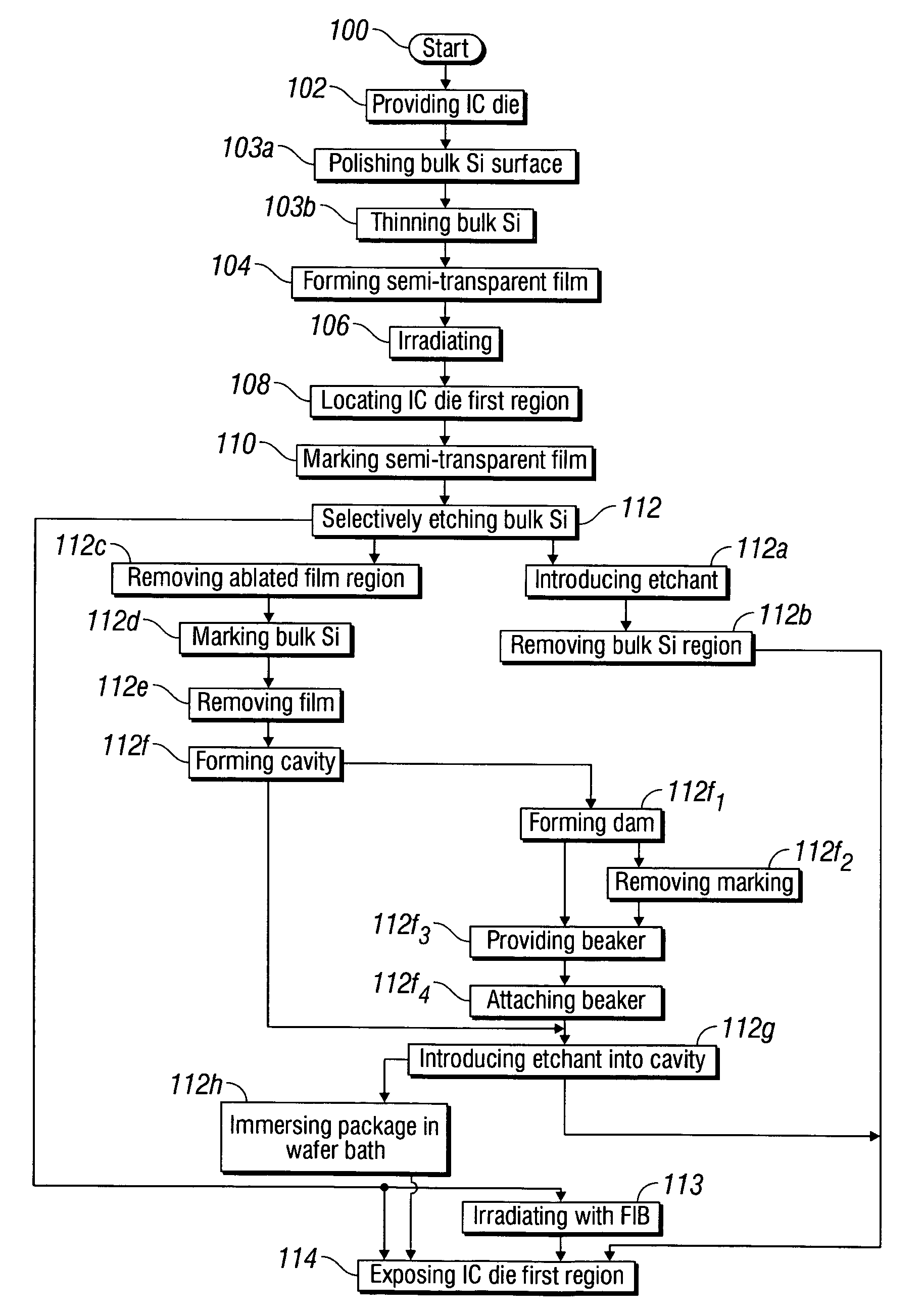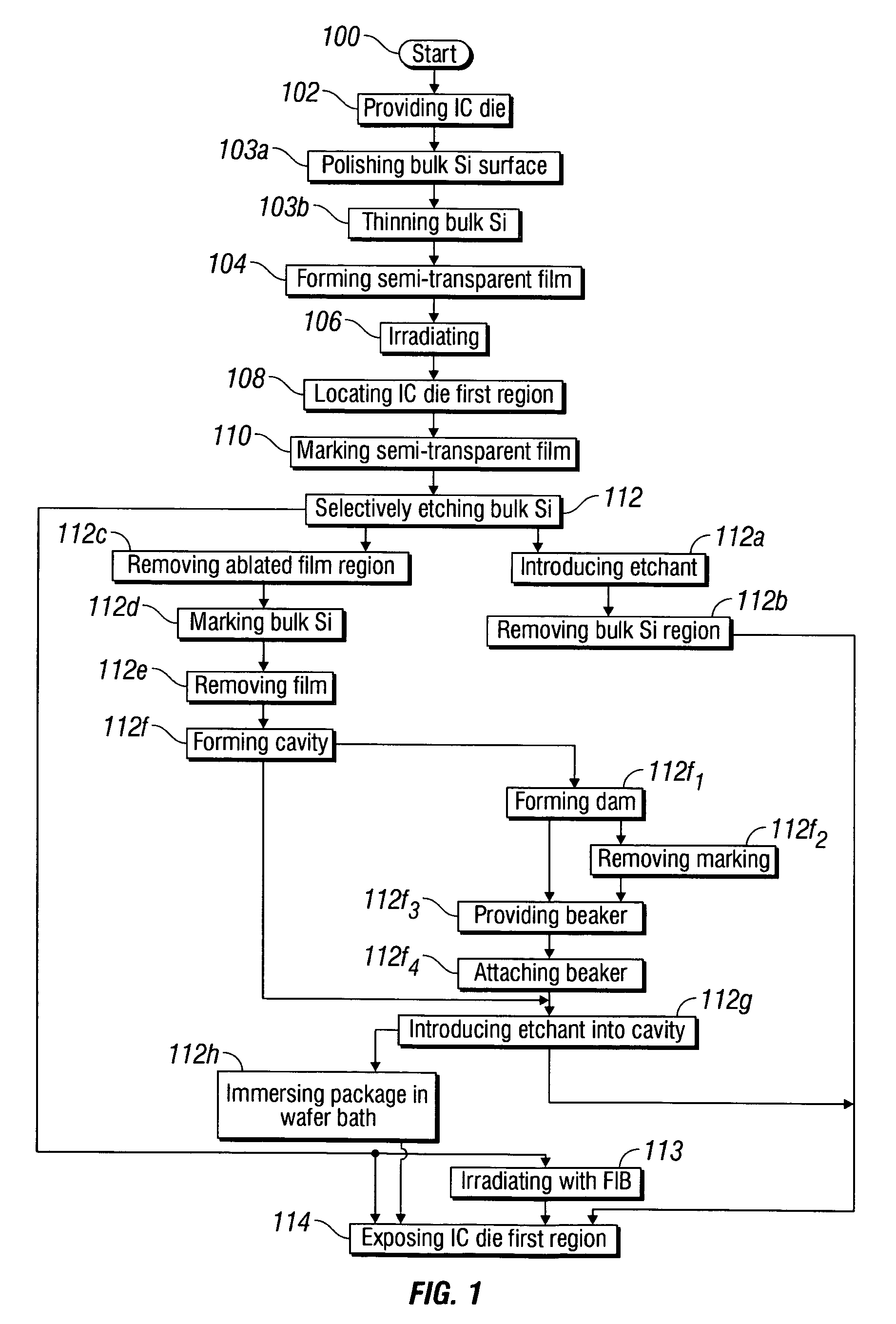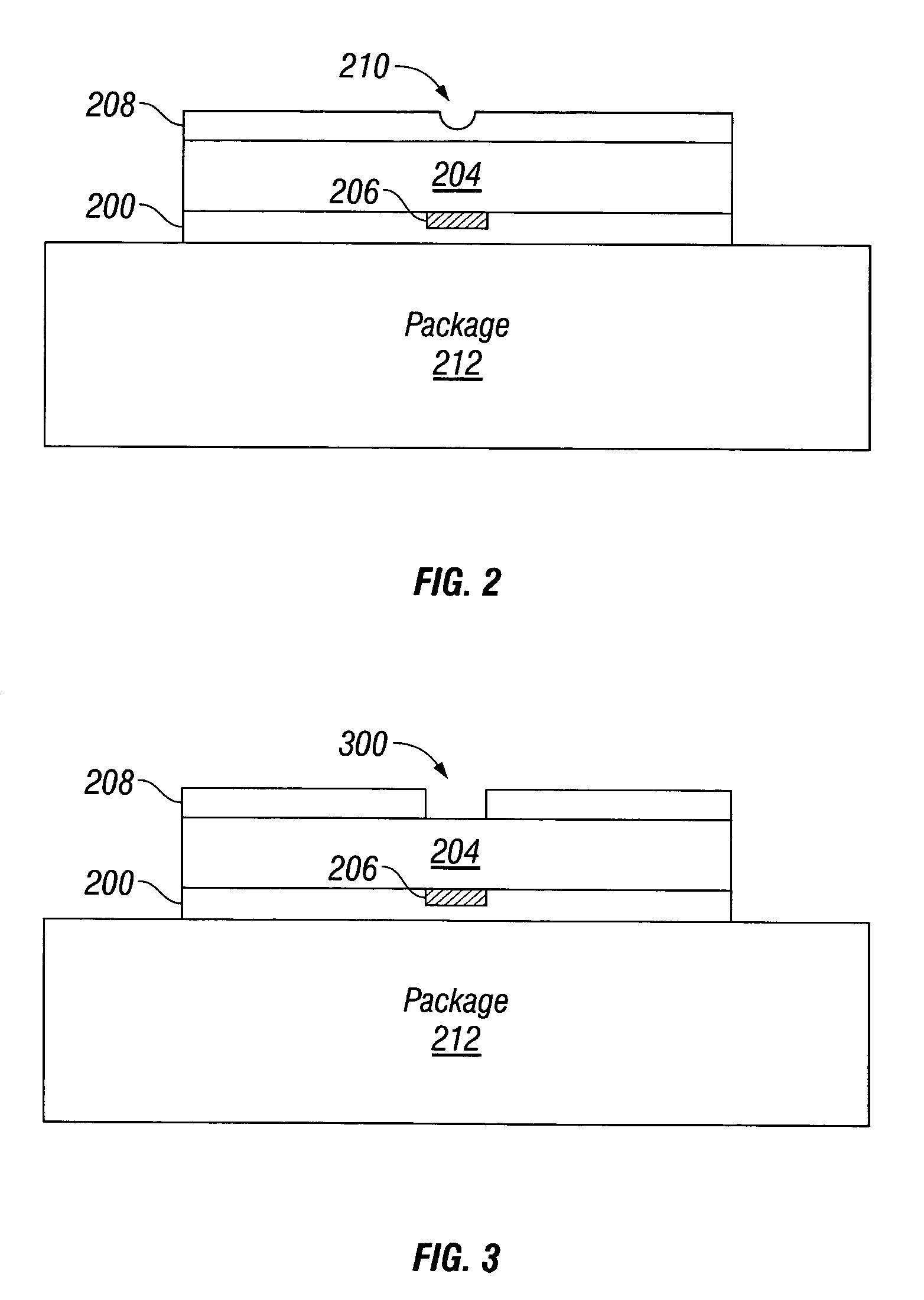System and method for selectivity etching an integrated circuit
a selectivity etching and integrated circuit technology, applied in semiconductor/solid-state device testing/measurement, semiconductor device details, semiconductor/solid-state device testing/measurement, etc., can solve the problem of process saving considerable time, achieve enhanced chemical etching process, reduce the use of fib tools, and save considerable time
- Summary
- Abstract
- Description
- Claims
- Application Information
AI Technical Summary
Benefits of technology
Problems solved by technology
Method used
Image
Examples
Embodiment Construction
[0024]FIG. 1 is a flowchart illustrating a method for selectively marking a region of integrated circuit (IC). Although the method is depicted as a sequence of numbered steps for clarity, the numbering does not necessarily dictate the order of the steps. It should be understood that some of these steps may be skipped, performed in parallel, or performed without the requirement of maintaining a strict order of sequence. The method starts at Step 100.
[0025]Step 102 provides an IC die with a first region located on a backside surface of a bulk silicon (Si) layer. Step 104 forms a semi-transparent film overlying the bulk Si layer, semi-transparent to light having a first wavelength. That is, the semi-transparent layer does not transmit 100% of incident light having the first wavelength. For example, the film may be semi-transparent to light having a wavelength greater than about 1 micron and less than about 2 microns. Step 106 irradiates the semi-transparent film with light having the f...
PUM
 Login to View More
Login to View More Abstract
Description
Claims
Application Information
 Login to View More
Login to View More - R&D
- Intellectual Property
- Life Sciences
- Materials
- Tech Scout
- Unparalleled Data Quality
- Higher Quality Content
- 60% Fewer Hallucinations
Browse by: Latest US Patents, China's latest patents, Technical Efficacy Thesaurus, Application Domain, Technology Topic, Popular Technical Reports.
© 2025 PatSnap. All rights reserved.Legal|Privacy policy|Modern Slavery Act Transparency Statement|Sitemap|About US| Contact US: help@patsnap.com



